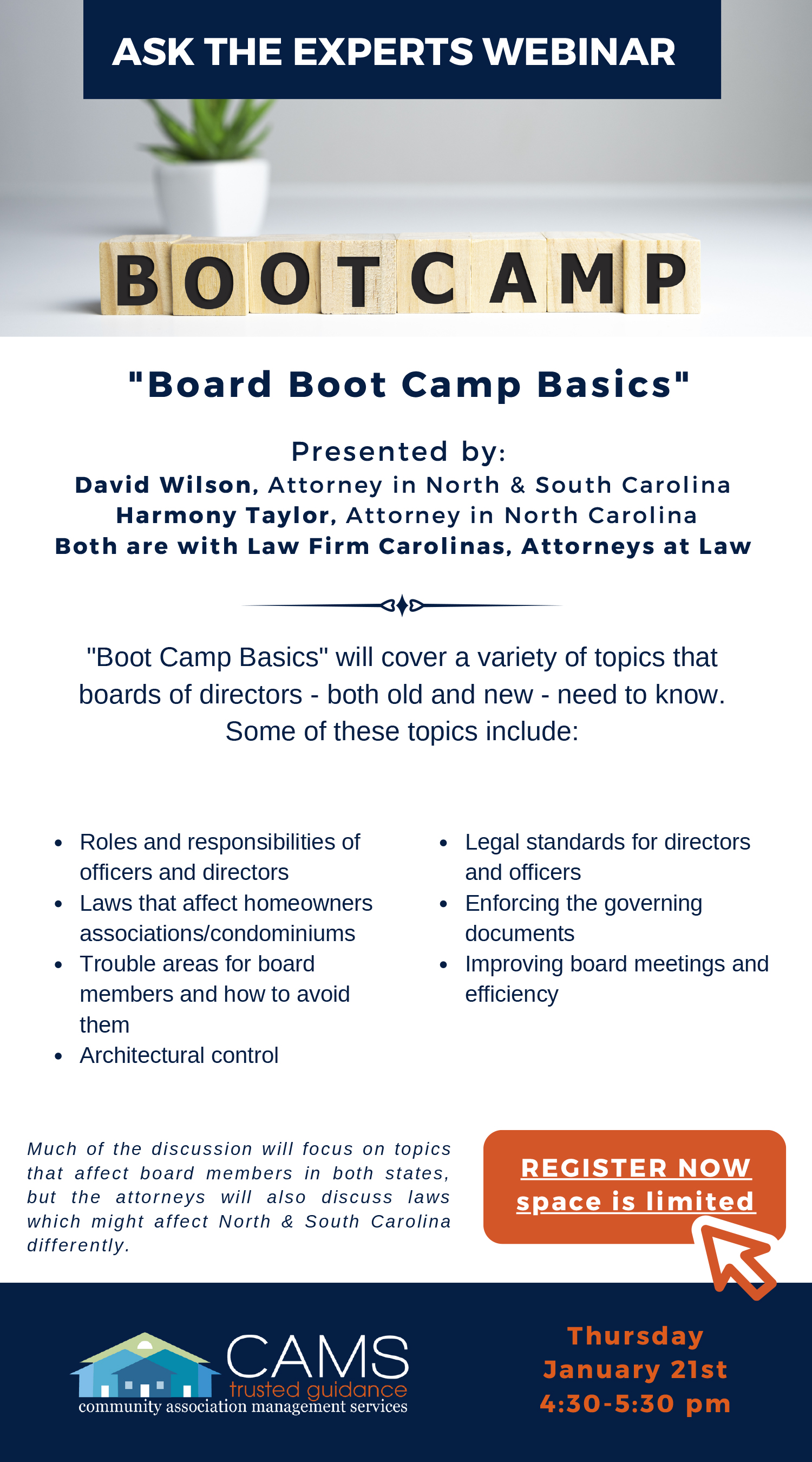One of the chief complaints I hear from potential clients is that it’s a confusing, time-consuming chore to ensure their property owners association is in full compliance with local, state, and federal regulations. This is never a surprise considering the many nuances related to subjects such as governing documents, recorded plat maps, design guidelines, and articles of incorporation for property owners' associations.
As the president of Community Association Management Services (CAMS) and a 26-year veteran of this industry, I find these topics fascinating and enjoy sharing what I know to help board members work together for the success of their associations.
A chain of governing documents and laws applies to property owner associations, which is why it's important to fully understand all of the rules and regulations. The following are some of the topics that we cover during orientation for board members of an association.
Community Governance
Community governance refers to the documents and laws that each board member has to deal with and understand when making decisions on behalf of the association. A complex hierarchy of documents and laws affects associations. Of course, federal laws always supersede local or state laws or town ordinances.
North Carolina Laws
To effectively manage a property owners association, it’s essential to understand state laws. In North Carolina, the state laws that apply to condominiums are North Carolina General Statute (NCGS) Chapter 47A and NCGS Chapter 47C. The law that applies to a single-family or planned unit development is NCGS Chapter 47F. Most associations are not-for-profit organizations that fall under NCGS Chapter 55A. It is also important for a community to comply with the state’s stormwater regulations and its stormwater permit, which states specific construction and ongoing maintenance requirements.
Town and County Ordinances
It's important to be aware of town and county ordinances to ensure that the declaration or decisions of the board are not in conflict. A community’s governing documents generally include the declaration of covenants, bylaws, and articles of incorporation. Declarations don't trump the articles of incorporation. These are two different documents that must be in alignment with each other; however, the declarations trump the b-laws if they are in conflict on any topic.
Bylaws have to do with how the affairs of the association are managed. Rules, regulations, and policies are generally established by the board of directors and then communicated to the members. Design guidelines generally have to comply with the processes and requirements for architectural issues, which are determined by an Architectural Review Board or Architectural Review Committee, whether it concerns new construction or the modification of an existing structure.
Recorded Plats
When reviewing information and making decisions, especially related to the common areas within a condominium or community, the plats recorded with the municipality need to be fully understood. Whether you reside in the city or county, make sure you review the recorded plat maps to determine whether the land in question is a common area or a public or private street, or if there are any easements involved. This review needs to happen before any decisions are made.
If you'd like to learn more about what CAMS can do for your community association, please visit our services page.























